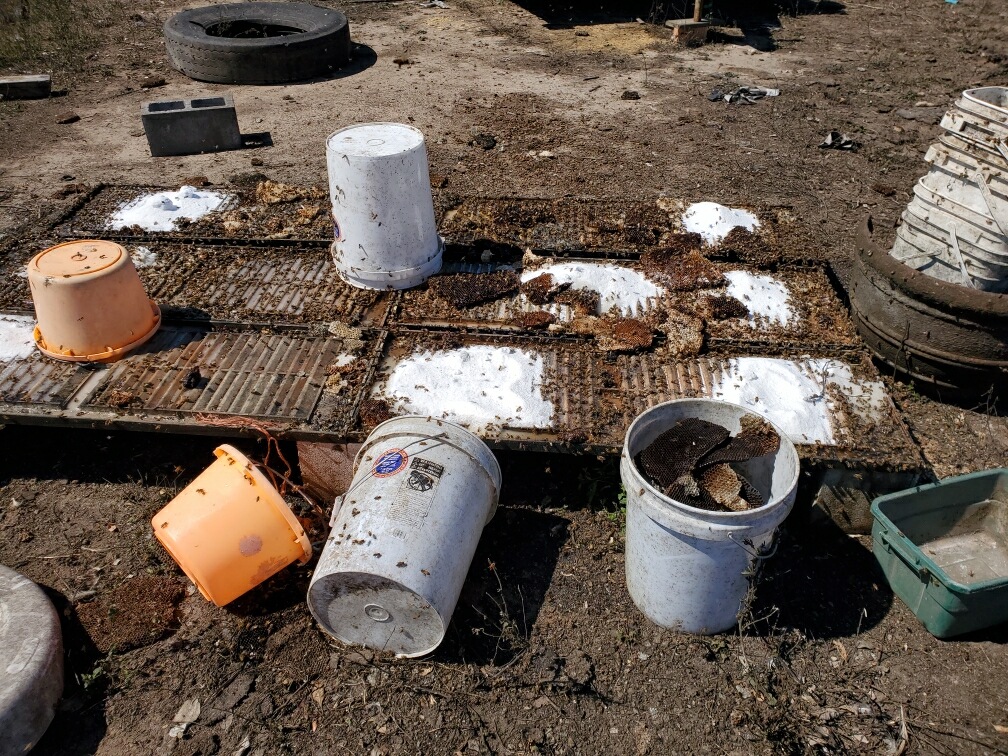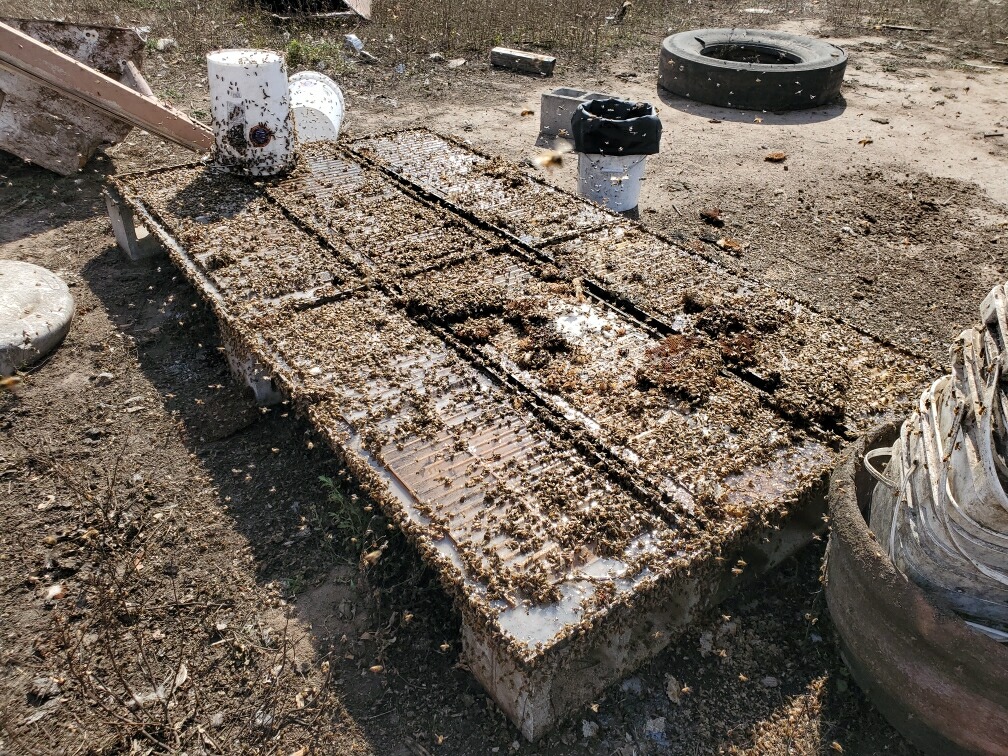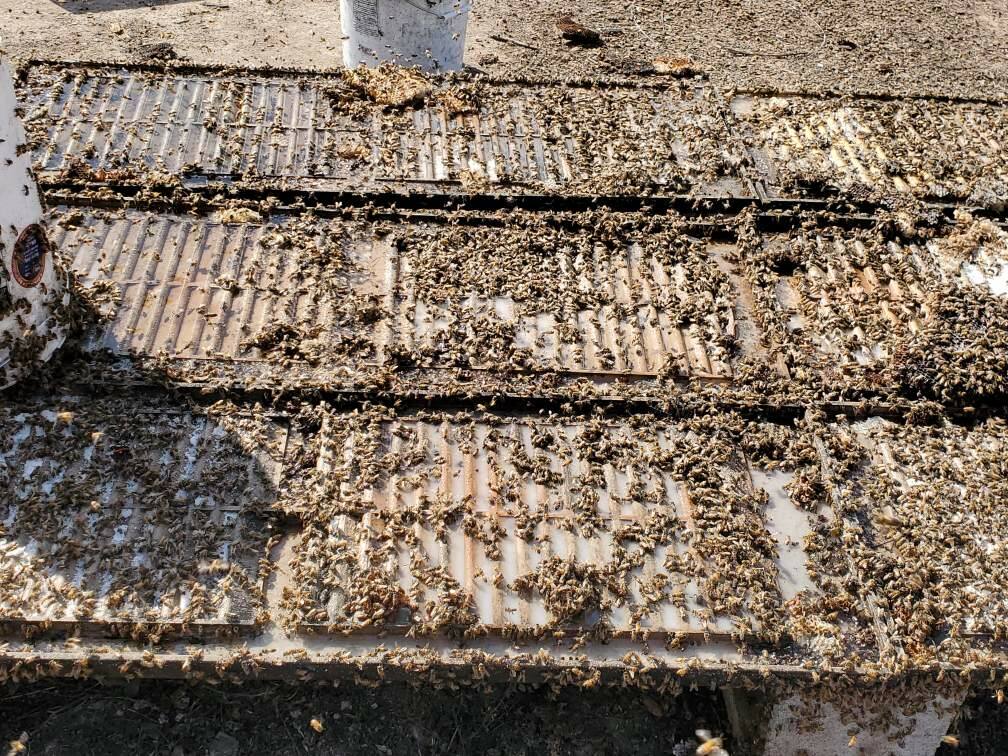I am seeing a lot of bees – What do I do?
Now if this week hasn’t been wild, I don’t know what has! For us Texans this cold was, to be charitable, an adventure and interesting experience.
European Honeybees, aka the bee you are mostly likely to encounter and the bees that us beekeepers raise, are more accustomed to cold weather and have specifically adapted to stay alive and active in the snow. It is our native bees that really suffer during cold snaps if they have already woken up from hibernation so if you see some bees out right now it’s probably a honeybee!
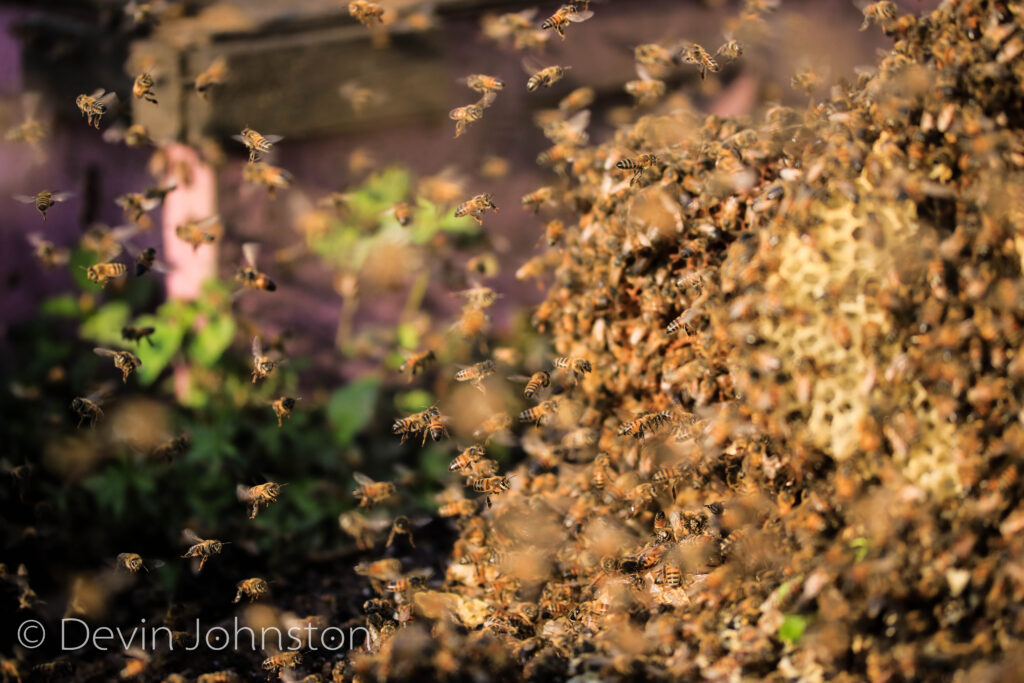
Have you been seeing honeybees more than normal? Are they around your house when you’ve never seen them there before? Well despite their ability to survive long winters these bees are HUNGRY. Being in the cold forces bees to consume more of their honey stores in order to covert that food into the energy they need to warm their hives. Bees try and keep their brood at 95 °F and if brood is not present, they will conserve energy and will allow their hive temperature to fall down to 55 °F though they generally will keep it well above that temperature.
In the Rio Grande Valley the last frost of the year has generally already past and the winter crops are near harvest while the spring crops are being planted. Mid-February is the perfect time for managed and wild hives start producing more brood to gear up for the early March honey flow.
More bees and more babies mean more food is required to keep those bees alive. While the temperatures are cold they use up lots of food to keep warm and are unable to forage. In south Texas there are some flowering plants nearly all year around, but between the frost killing them and being unable to go outside for so long the honeybees are desperate for food.
So if you see bees investigating your house then do not worry! It’s a compliment and means your house smells really delicious! Valentine’s day just passed and that means many people still have fresh cut flowers in their house and even if you can’t smell them from the outside that doesn’t mean bees can’t! Floral perfumes and house cleaners, fresh or dried flowers, and sweet treats are all things that can attract bees to your house to find food.
Seeing bees around the house is no reason to worry and you can easily trap and release a bee that found her way inside. An easy way to keep bees away from the house if you are worried about children getting stung is to bribe them by putting out some sugary water in a shallow container as far away from your house as possible. You don’t have to put much, but they will be more likely to go there instead of keep investigating the home.
How to feed the bees:
Generally it is unnecessary to feed the feral bees, and you certainly don’t want to accidentally feed a beekeeper’s bees, however after this freeze putting out some sugar water is a great way to help all pollinators and keep bees away from high traffic areas of your property.
Simply warm up some water (DO NOT BOIL) and dissolve equal part sugar to create a 1:1 water/sugar ratio syrup. Place that in a shallow plate or pan, preferable with some sticks or rocks to prevent bees from drowning, in an area away from kids or pets.
Please do not feed honey, be it store bought or from a farmer’s market, to bees! There are a lot of pathogens that can spread from colony to colony found in honey. These diseases don’t affect humans in the slightest but things such as American Foulbrood can destroy a whole apiary.
The only time you need to call a beekeeper is if you suspect that you have an established hive and see a lot of bees coming in and out of an area consistently or if you see a large swarm of bees resting on or near the house.
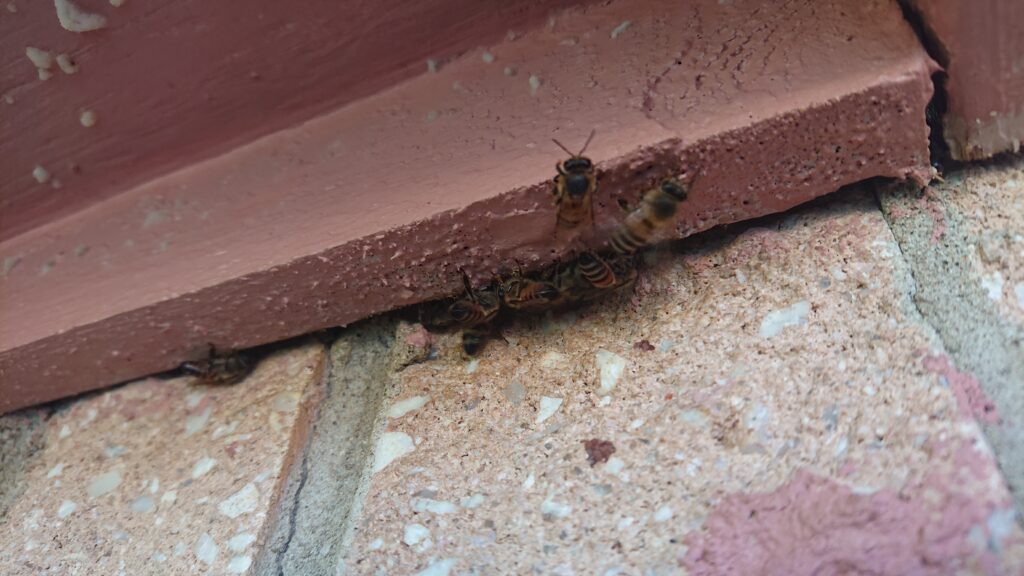
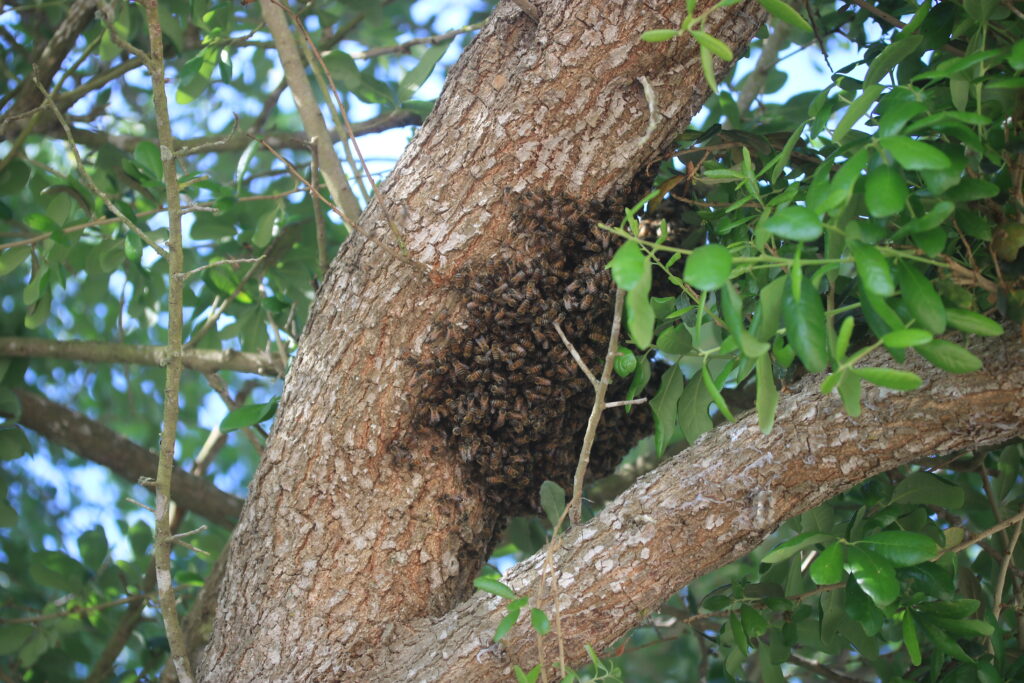
- Share:
